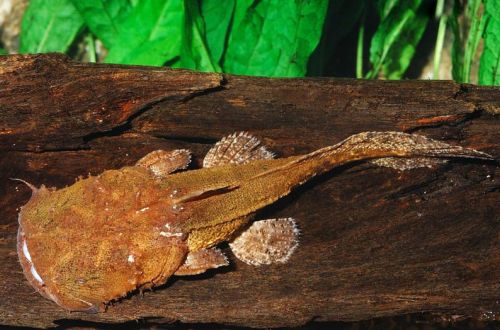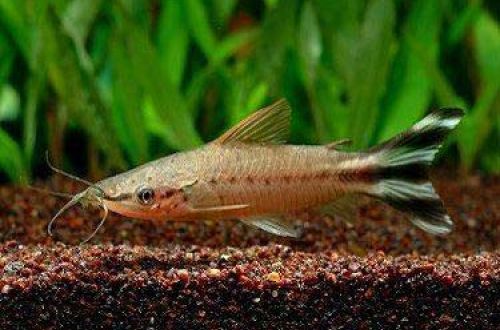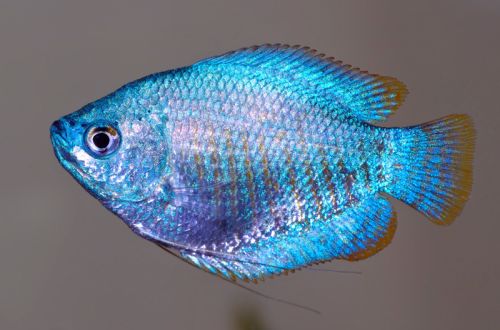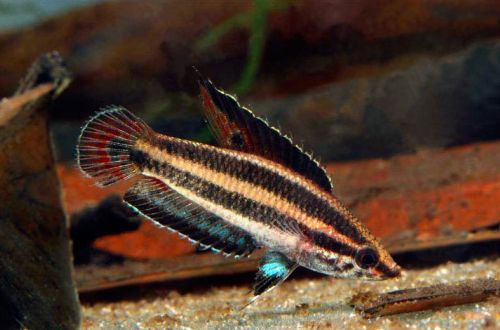
catfish angler
Chaka bankanensis or catfish fisherman, scientific name Chaca bankanensis, belongs to the Chacidae family. The original fish, is popular with lovers of exotic species. Due to its appearance, it can cause opposite emotions in different people, but in any case it attracts attention.

Habitat
It comes from Southeast Asia, is found on the numerous islands of Malaysia, Indonesia and Brunei. It lives in shallow shady waters under the dense canopy of tropical forests, where it hides among fallen leaves and snags.
Brief information:
- The volume of the aquarium – from 80 liters.
- Temperature – 22-26°C
- Value pH — 6.0–8.0
- Water hardness – soft (1-10 dGH)
- Substrate type – any soft
- Lighting – preferably subdued
- Brackish water – no
- Water movement – very little or no
- The size of the fish is about 20 cm.
- Nutrition – live food
- Temperament – quarrelsome
- Content alone or in a group
Description
Adults reach a length of about 20 cm. The brown coloration, combined with the shape of the body and fins, helps to camouflage on the bottom. Attention is attracted by a huge flat head, along the edges of which small antennae are visible. Sexual dimorphism is weakly expressed, adult males differ from females only in size (larger).
Food
A predatory species that hunts its prey from an ambush. It feeds on live fish, shrimps, large insects and worms. Catfish lies on the bottom and lies in wait for prey, luring it with its antennae, imitating the movement of a worm. When the fish swims up to throwing distance, an instant attack occurs.
Maintenance and care, arrangement of the aquarium
The catfish angler is inactive, for one individual a tank of 80 liters is enough, but no less, otherwise there will be a direct threat to the health of the fish (more on this below). The equipment is selected and adjusted in such a way as to provide a subdued level of illumination and not create excessive water movement. The design uses a soft sandy substrate (he sometimes likes to dig into the ground), large snags overgrown with mosses and ferns, as well as fallen leaves of trees, for example, European oak or Indian almonds, among which the catfish feels most comfortable.
The leaves are pre-dried, then soaked for several days until they begin to sink, and only then they are laid out on the bottom. Updated with new ones every two weeks. The leaves provide not only shelter, but also contribute to the establishment of water conditions characteristic of the natural habitat of the fish, namely, they saturate the water with tannins and color it light brown.
Aquarium maintenance comes down to regular cleaning of the soil from organic waste and weekly replacement of part of the water (15–20% of the volume) with fresh water.
Behavior and Compatibility
They are distinguished by a peaceful disposition, able to live both alone and in company with their relatives, however, due to their diet, they are not suitable for a general aquarium with small and medium-sized fish. Only species similar in size can be considered as neighbors. In some cases, it is possible to achieve balance in a high aquarium, where the angler catfish will occupy the lower bottom layer, and the school of fish will occupy the upper one, in order to minimize their contact.
Breeding / breeding
At the time of this writing, it was not possible to find reliable information about the successful cases of breeding this species in a home aquarium. It is supplied for sale from commercial hatcheries (fish farms), or, which is quite rare, is caught from the wild.
Fish diseases
The main cause of most diseases is unsuitable living conditions and poor-quality food. If the first symptoms are detected, you should check the water parameters and the presence of high concentrations of hazardous substances (ammonia, nitrites, nitrates, etc.), if necessary, bring the indicators back to normal and only then proceed with treatment. Read more about symptoms and treatments in the Aquarium Fish Diseases section.





